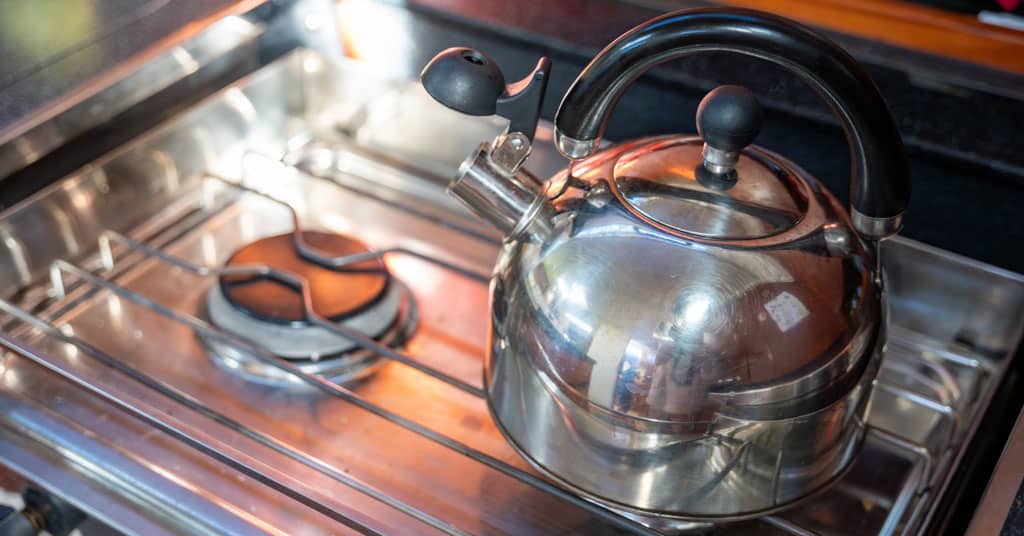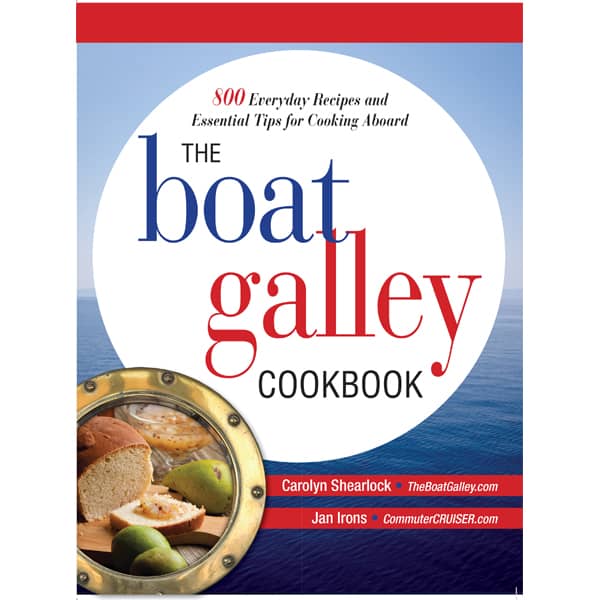Together with pot restraints, stove gimbals are an important safety feature of any marine stove. The first time I used the gimbal — on our first charter — I felt like a true “cruiser.” In the years since then, it’s become common place to use a swinging stove.
What is a Gimbal
The gimbal is the second half of keeping your pans on the stove or level in the oven. Basically, it’s a pivot point running fore and aft. It lets your stove/oven stay level, even when the boat is heeled or rolling.
Generally, gimbaled stoves have a latch that keeps the stove from swinging when it’s not in use or not needed. These are usually some form of barrel latch that you slide to release. Once released, the stove will swing with the motion of the boat. While I use my pot restraints all the time, I don’t always release the gimbal latch. If conditions are calm, particularly in anchorages, it’s easier to have a stove that stays in one place.
Points to Remember
In using a gimbaled stove, there are two important points:
- Most gimbal systems will let the stove swing 20 to 30 degrees. Beyond that point, it will crash against the back wall. If it hits with any force, pans are likely to fly off the stove onto the floor or onto the cook. While pot restraints keep pans from sliding, a sudden crash can bounce the pot right out of the restraints. It’s also not good for the stove to crash into the hull.
- The gimbal is simply a balance point. If the weight on both sides isn’t equal, the stove will tilt towards the heavier side and won’t keep the cooking surface flat.
Thus, if conditions are rough, you need to check the swing of the stove before using it. Release the latch and watch the stove swing for several minutes, preferably through the worst movement the boat is experiencing. If the stove crashes into the wall , forget about cooking and find something cold to eat.
Second, you’ll have to equalize the weight on both sides of the pivot point. For example, if you want to cook something on a front burner, fill the teakettle or a saucepan with water. Then set it on an unlit back burner (using its pot restraints). Adjust the amount of water until the stove is approximately level. This will also help keep the back of the stove from hitting the hull since the bottom of the stove won’t be jutting out to the back.
When you are finished cooking, latch the stove again so that if conditions worsen the stove won’t hit the hull.
Rough Weather Tip
Here’s one more tip for cooking in rough weather. A pressure cooker makes a good pan to use since you can latch the lid, even if you don’t use the weights and pressure cook. Food is far less likely to slosh out with the lid latched. And, heaven forbid, if the pan does fly off the stove, there’s less chance that the (hot) contents will be flung everywhere.
Related Posts

Carolyn Shearlock has lived aboard full-time for 17 years, splitting her time between a Tayana 37 monohull and a Gemini 105 catamaran. She’s cruised over 14,000 miles, from Pacific Mexico and Central America to Florida and the Bahamas, gaining firsthand experience with the joys and challenges of life on the water.
Through The Boat Galley, Carolyn has helped thousands of people explore, prepare for, and enjoy life afloat. She shares her expertise as an instructor at Cruisers University, in leading boating publications, and through her bestselling book, The Boat Galley Cookbook. She is passionate about helping others embark on their liveaboard journey—making life on the water simpler, safer, and more enjoyable.
Simplify meal prep on board with proven strategies for provisioning, maximizing fridge space, and cooking delicious meals aboard your boat.










Carolyn Shearlock says
Good point on the oven door, Dave! Thanks
Carolyn Shearlock says
Most have a latch on the horizontal pivot that you can release. The good news: if you no longer have the owner’s manual for your stove to find out how to release it, you can almost always find it online by Googling on the make and model of stove. If you don’t find it that way and the stove was original to your boat, ask in the C&C Owner’s Group — someone else is sure to have done it. Just be sure to state what stove or at least the year of your boat as not all boats are identical.
Carolyn Shearlock says
I know there is, because I’ve seen it on production boats at shows. I don’t know who makes them, though. I’m at the Annapolis show right now, and I’ll try to find info.
Gerry says
If it is just a little alcohol stove, you could make a ‘basket’ and let the whole thing swing from the roof. Lots of movement that way so you could also make a bracket that comes off the wall somewhere lower down where the movement is less and let it swing from there.
Be sure to put some bungees on it to dampen the swing.
Tim Palmer says
The Forespar Mini Galley is what you describe
Tim Berry says
Great tip.